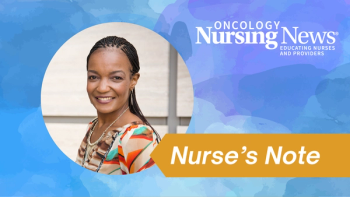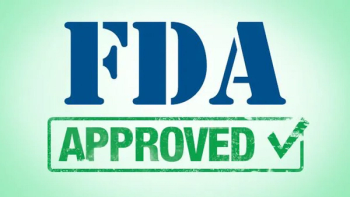
- October
- Volume 14
- Issue 5
Improve Medication Adherence With Technology
When considering the importance of medication adherence, former US Surgeon General C. Everett Koop said it best: “Drugs don’t work in patients who don’t take them.” That was 35 years ago, and the issue remains a major area of concern for clinicians today.
When considering the importance of medication adherence, former US Surgeon General C. Everett Koop said it best: “Drugs don’t work in patients who don’t take them.” That was 35 years ago, and the issue remains a major area of concern for clinicians today.
Many prescriptions are never filled—and even when filled, they often are not taken as prescribed. Stay-at-home orders from the coronavirus disease 2019 (COVID-19) pandemic may be making things worse.
As the pandemic continues to spread, medication adherence has never been more critical, especially for elderly patients and those with chronic conditions who are the most susceptible to complications, including death, from COVID-19, according to the Centers for Disease Control and Prevention. To protect the most vulnerable patients, physicians and pharmacists must work together to identify the reasons patients aren’t taking their medications as prescribed and provide solutions that improve adherence.
There are 3 primary reasons patients don’t fill prescriptions or take their medications as directed: high cost, lack of symptoms, and forgetfulness.
Financial concerns
A major contributor to medication nonadherence is high out-of-pocket costs for prescription drugs. Results of a study published in Annals of Internal Medicine also found a direct correlation between the amount of a patient’s copay and the likelihood of prescription abandonment. Patients with $50 copays were nearly 4 times more likely to abandon a prescription at a pharmacy than patients paying $10.
Today, millions of Americans have lost their jobs, their health insurance, and the incomes they used to pay for out-of-pocket health care costs. One in 7 report they would avoid seeking care for potential COVID-19 symptoms because of cost concerns, according to a recent Gallup-West Health poll. Unless patients find some financial relief, medication nonadherence rates surely will rise.
Lack of symptoms and misunderstanding of disease
Patients often do not understand why they need certain medications. It’s not uncommon for a person to say they don’t feel their blood pressure is high or that they don’t have any symptoms from high cholesterol. If they don’t feel sick, people may stop taking their medications, which can have serious consequences over time. This situation often leads to unnecessary visits to the emergency department and, occasionally, hospital admissions that could have been avoided. During the current health crisis, we have all been encouraged to stay at home, limit trips to the grocery store and pharmacy, and postpone nonessential medical care. This means patients may have less interaction with physicians and pharmacists who can educate them about prescribed therapies. Now is the time for care team members to adopt proactive measures to make sure patients understand what their medications are for, how to take them, and why doing so as prescribed is important.
Delaying or forgetting to pick up prescriptions
Even in life before the pandemic, it was easy to put off a trip to the pharmacy for a prescription. Now, as many of us remain sheltered at home, it’s a challenge to recall what day it is, much less remember to pick up a prescription.
Using reminder tools that notify patients when medications are prescribed and when they are ready to be picked up, pharmacists and physicians can help reduce prescription abandonment. Many independent pharmacies and national chains are offering free delivery services for prescriptions, which is particularly beneficial for patients who feel leaving home could compromise their health. Additionally, health plans have eased restrictions on filling prescriptions in larger quantities, reducing trips to the pharmacy.
Improving medication adherence with technology
Care team members can improve medication adherence and health outcomes by leveraging technologies that provide price transparency, offer access to educational materials, and send reminders directly to patients’ mobile devices. Technology also can facilitate secure communication between prescribers and pharmacists.
For example, when prescribers see patient-specific drug pricing details at the point of encounter within prescribing workflows, it empowers them to discuss formulary options and out-of-pocket costs with patients and potentially review financial assistance options if cost is a barrier. Real-time price transparency tools let patients know exactly how much their medication will cost before going to the pharmacy. These tools eliminate the “sticker shock” experienced when the pharmacist accesses the patient’s health plan benefits to discover the medication is unaffordable for the patient.
Care providers also can reduce financial barriers with new technology that gives patients direct access to copay assistance options. Emerging solutions may link patients to educational content about prescribed medications, giving them a better understanding of the prescribed therapy.
Thomas E. Sullivan, MD, is chief strategy officer and chief privacy officer for DrFirst. He is a board-certified cardiologist and internal medicine specialist with more than 40 years of clinical practice, and he is a past president of the Massachusetts Medical Society.
Articles in this issue
about 5 years ago
Cancer Care During COVID-19: Nurses Share Their Perspectivesabout 5 years ago
We Honor Oncology Nurses for Their Dedicationabout 5 years ago
Handling "Zoom Fatigue" Amid Constant Videoconferencingabout 5 years ago
Living Her Dream: An Interview With Christie M. Santure, BSN, RNabout 5 years ago
End-of-Life Conversations: What Nurses Are SayingNewsletter
Knowledge is power. Don’t miss the most recent breakthroughs in cancer care.
















































































